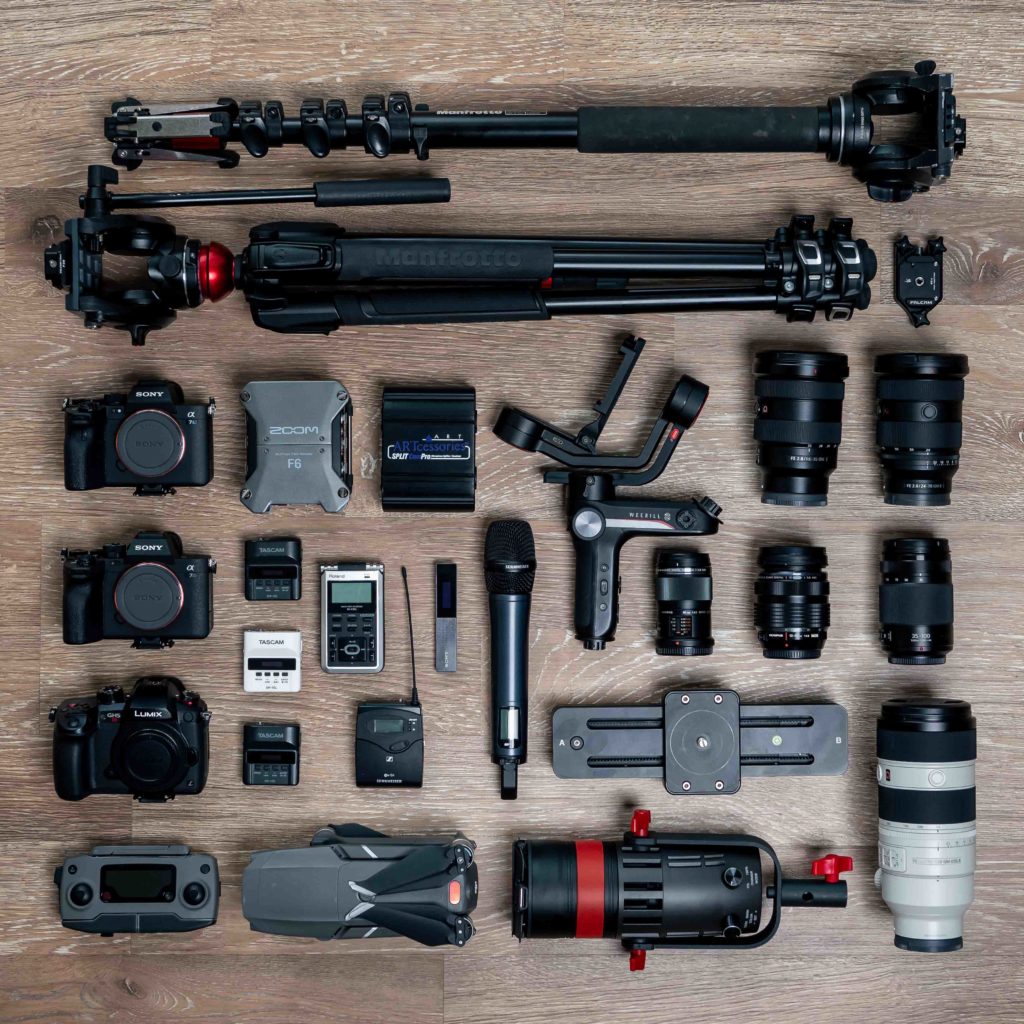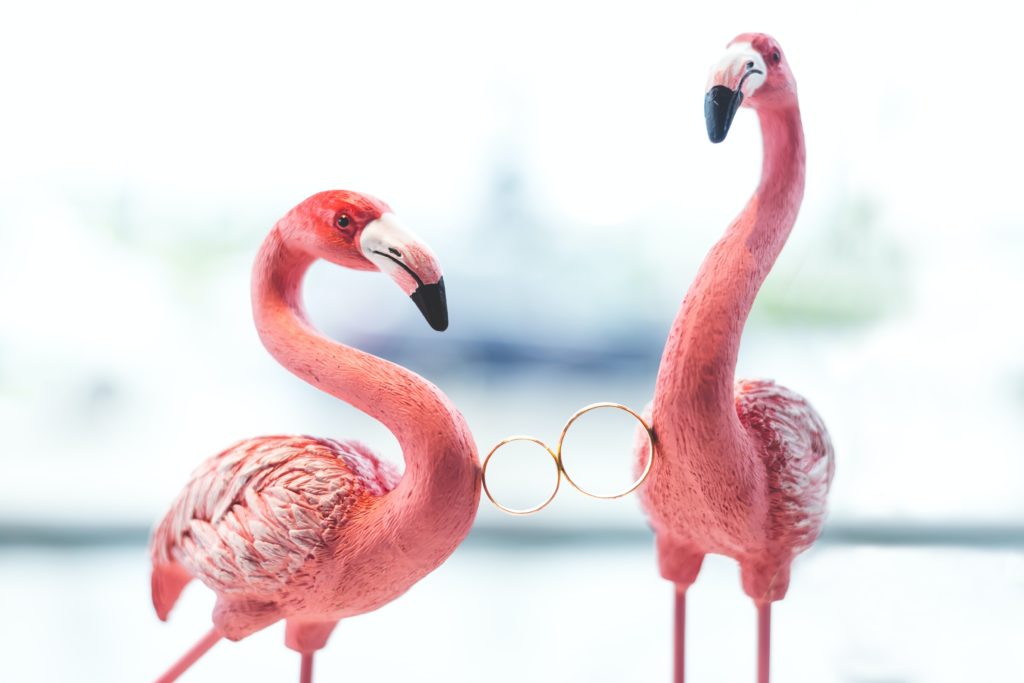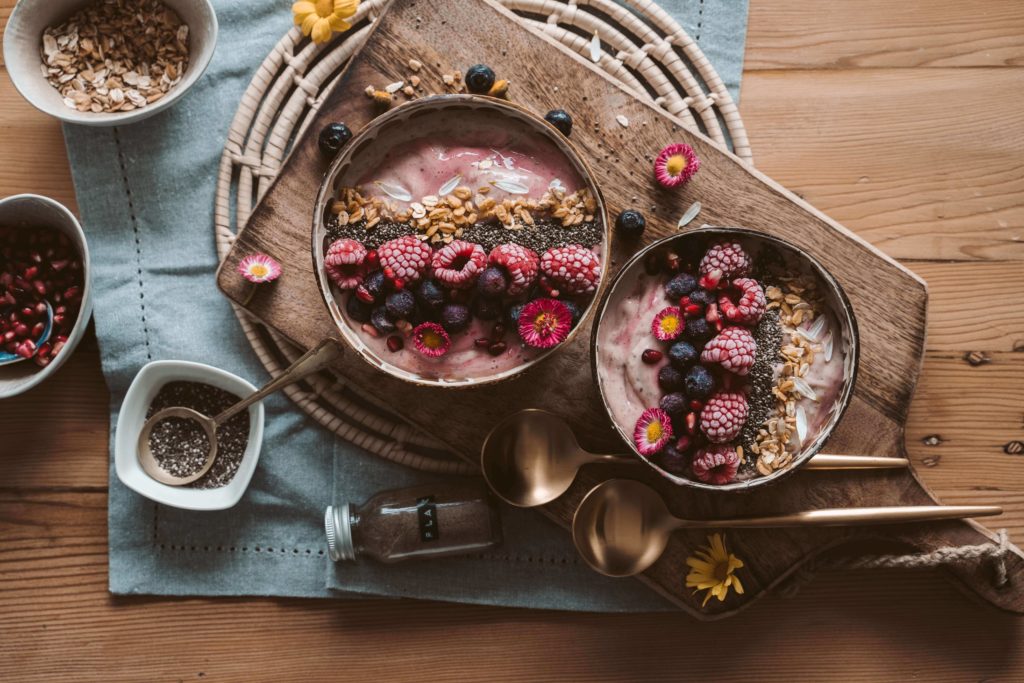
I filmed my first wedding in 2010 with two Canon XHA1 camcorders, a set of Sony wireless mics, and a bunch of DIY support gear my roommate at the time helped me build. It’s incredible how far technology has come since then. Not only has wedding videography equipment gotten more advanced with drones and electronic gimbals, for example, it’s gotten smaller and cheaper. The barrier to entry for wedding videography is much lower than it used to be.
When I shoot weddings my prime objective is to tell a compelling story through the use of highly cinematic visuals. My wedding videography equipment is lightweight with quick setup so I can focus on the important things happening throughout the day. The last thing you want is to fight with your wedding gear. It should essentially stay out of your way. Here is my current wedding videography equipment in 2023. Note: as an Amazon Associate I earn a small commission from qualifying purchases through the links below:
CAMERAS
- Sony A7SIII is the best camera for wedding videography. It has every feature you could need as a wedding videographer. 4K resolution up to 120 frames per second in 10bit 422 color gives you an astounding image. The dynamic range gives you great detail in the shadows and highlights, especially when shooting in S-Log. The ISO performance is excellent allowing for noise-free low light shooting. There’s also great image stability options and world class Autofocus.
- Sony A7IV is what I use for my B and C cams. It’s a very similar camera to the A7SIII, but much better for stills, which comes in handy when I’m doing any portrait, real estate, and event photography. The only real drawback to this camera is 4K at 60 frames per second has a 1.5x crop requiring you to switch to a wider lens to compensate. However, this can come in handy if you want extra reach on your lenses.
- DJI Mavic 3 Pro 3 Pro is the best drone for wedding videography, hands down. It has a 3 lens system with a 4/3 sensor on the main camera giving incredibly detailed footage and low light performance. With the two telephoto lenses, you can achieve incredible compression and parallax. Combined with the D-Log and D-Log M color profiles, you get massive dynamic range. All this in a compact package and a 43 minute max flight time makes it perfect for filming weddings.
LENSES & FILTERS
- Sony 16-35mm f/2.8 GM: establishing shots, ceremony wide/medium shot
- Sony 24-70mm f/2.8 GM II, main lens, versatile and used all day
- Sony 70-200mm f/2.8 GM II: ceremony bride/groom closeup, toasts
- Sigma 85mm f/1.4 DG DN: getting ready, golden hour portraits
- Sony 135mm f/1.8 GM: golden hour portraits, toasts
- Freewell Hard Stop Variable ND 2 to 5 stop 82mm – fits all but the 70-200 and 85
- Freewell Hard Stop Variable ND 2 to 5 stop 77mm – fits the 70-200 and 85
AUDIO EQUIPMENT
- Zoom F6: this audio recorder is a compact beast! It has 6 XLR inputs and the 32 bit float bit depth allows for extreme audio levels without distortion or noise. This is ideal during the reception when the volume goes from super loud dance music to softly spoken toasts and speeches.
- Tascam DR-10L Pro: a tiny audio recorder that I use during the ceremony and as backup for speeches. This device records in 32 bit float, so you never have to worry about the audio level. Even if it’s too soft or it distorts, you can recover the signal to perfection. The Tascams are placed in the jacket pocket of the groom and either the jacket pocket or the top of neckline on the back of the officiant. I also have one that I put in a white URSA thigh strap on the bride or on a white suit.
- Sanken COS-11D: this lav mic is far superior to the stock lav mic that comes with the Tascam DR-10L Pro. It’s crisper sounding and has more sensitivity. I use Bubblebee wind protectors on them for outside ceremonies and first looks. I have two black ones and a white one. The white one is generally used to mic my brides.
- Roland R-05: this is my go-to audio recorder for both connecting to the DJ’s mixer via RCA cables, as well as for recording acoustic soloists and ensembles with the built-in stereo microphone. There’s a newer model, the R-07, but it’s still a great unit and I have two of them.
- Sony ICD-TX650: this ultra slim mic is perfect for attaching to the handheld mic during reception toasts. I use it as a backup for when the DJ’s mic invariably loses signal or emits static. There’s a newer model, the TX660, which has some minor improvements.
- Sennheiser EW 135P G4: Occasionally a DJ will have a wired mic that doesn’t reach to where I’d ideally like the toast givers to stand. Or the sound person’s mic has interference or other issues. This handheld wireless mic system is the perfect solution. I plug it into an Art SPLITcom Pro and take one feed to my Zoom F6 and the other back to the sound person’s console so they can route the audio to their monitor speakers. This gives me a clean signal that bypasses the DJ’s gear.
LIGHTS
- CAME-TV Q-55S Boltzen 55w Bi-Color LED’s are the lights I use for illuminating the dance floor for entrances, first dances, and speeches. They come with built-in fresnels for focusing the lights between spot (speeches, cake cutting, grand exit) and flood (dancing, bouquet/garter toss). Built-in barn doors allow me to shape the light and control spill. They are also bi-color, so it allows me to quickly alter color temperature without messing with gels. The best part is they run off of two Sony L-Series batteries, which makes them ultra portable. You can also run them off of V-mount batteries, but that increases the size of the units. Another popular option for lights that many wedding videographers swear by are the Aputure 60X. I find them to be a bit too cumbersome for my liking and they can’t run off the Sony L batteries. I use other Aputure lights, however, for corporate gigs.
SUPPORT GEAR
- Manfrotto 500 Fluid Head and 190X Tripod: I have three of these fantastic tripods. They’re light, they collapse to a small size, they extend over 6′, have a top loading plate system, ball mount, and telescoping column. This tripod ticks all the boxes a pro needs.
- Manfrotto XPRO Monopod: I primarily shoot on tripods, but occasionally I grab this monopod for certain shots when necessary. It’s great for high tilted down angles and moving around quickly.
- DJI RS 4: this is the best gimbal for wedding videography, in my opinion. It’s compact, lightweight, and you can lock the axes when changing lenses and for storing/transport. I also like that I can control the camera via bluetooth instead of a cable. The movement is incredibly smooth and the joystick is very fluid. I love the automatic locking system and the ability to quickly switch to vertical shooting mode. In 2024 this gimbal has all the modern features you need.
- Edelkrone SliderONE Pro: This motorized slider is my secret weapon. Sliders aren’t as popular nowadays as wedding videographers attempt to recreate classic slider shots with gimbals. However, to get precision detail shots of the rings, accessories, and reception details, you can’t beat this thing. It’s controlled via the accompanying phone app.
- Ulanzi Falcam F38 QR System: I absolutely love these quick release plates. I have them on all my tripods, slider, monopod, gimbal, and pants belt. They lock solidly in place with no wiggle. The plates are low profile and contain little stoppers so my camera bodies don’t shift on them. I find the system better designed and more universal than the one by Peak Design.
COMPUTER & SOFTWARE
- Apple MacBook Pro
- Apple Final Cut Pro
- Apple Compressor
- Apple Logic Pro
- Neat Video
- Digital Anarchy Flicker Free
With the ever-changing landscape of filmmaking gear, this list is consistently revisited and updated as my wedding videography equipment gets refreshed. This set of wedding gear will have you stocked and prepared for any wedding or event.
~Patrick
More awesome blog posts!


